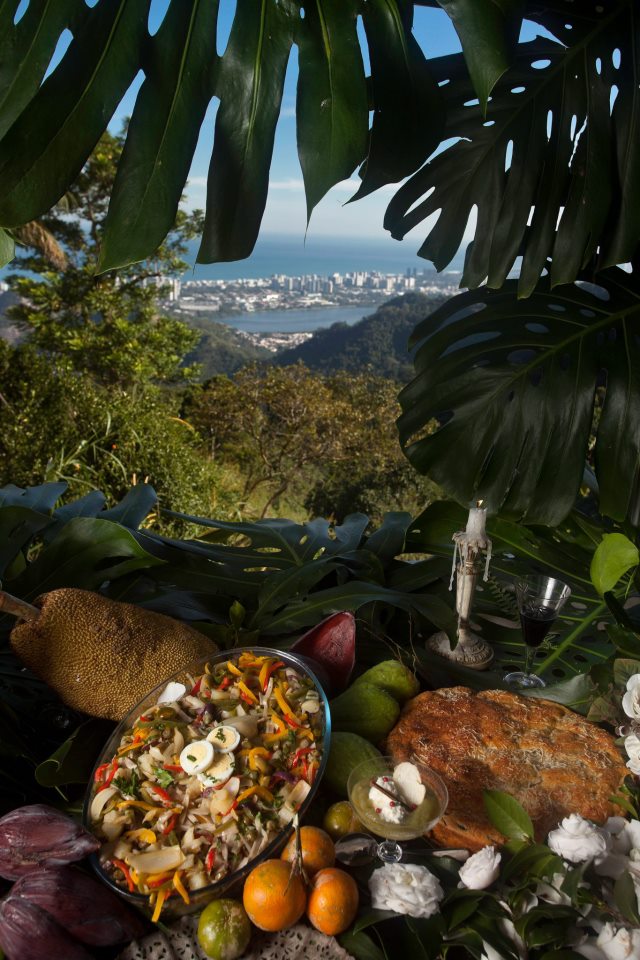Changemaker Catalyst Award recipient Jessica Glass traveled to the favela Vale Encantado in Rio de Janeiro, Brazil, during the summer of 2019. Jessica spent time in the community investigating their thriving example of community sustainability combined with social innovation through ecotourism. This contributed to her understanding of community-based social entrepreneurship and allowed her opportunities to evaluate ways in which other favelas might be able to benefit from their exemplary model. As a PhD student in Latin American Studies, this project is part of her broader dissertation research about favela commodification, citizenship, and agency in Rio.
This summer I had the opportunity to spend time with and learn from community leaders in the favela Vale Encantado (“Enchanted Valley”) in Rio de Janeiro, Brazil. Vale Encantado is unique in its positioning inside the Tijuca National Rain-forest, and the vegetation and space that it has access to. I first visited Vale Encantado in 2015 when I was assisting a field school in applied anthropology from Georgia State University, and I was, quite literally, enchanted with the place; the picturesque, lush surroundings combined with the collaborative attunement to both the natural and built environments in the community was captivating. Witnessing the rain-forest in an urban setting was magical! Seeing the flora with my own eyes while simultaneously learning about its myriad nutritional and medicinal uses was fascinating and exciting! My desire to spend time in such a place was bolstered by wanting to investigate how this favela operates and how other favelas might be able to look to this community for inspiration and benefit from ways through which they built their model of self-sustainability and health promotion using eco-tourism.


In their context of extreme poverty, favelas (and their residents) are at the same time excluded from and exploited by society; treated like second class citizens but relied on for labor, favelados are actively marginalized. Therefore, community-based projects promoting self-sustainability and activism are integral. Inequalities are intense in Brazil, and people living in favela communities do not always have access to public city services, or have their basic needs met. While city services (including healthcare) are technically universal in Brazil, people associated with favelas are often ignored by the systems which provide them subpar services. Additionally, most of these communities are lacking resources for healthy food consumption. Otávio Barros, the elected president of the residents’ association in the favela Vale Encantado, saw the potential in the community to start creating solutions for these problems through environmental tourism. In 2007, he became formally trained as guide and established a cooperative that provides self-sustainability and health promotion while supporting the environment. Since that time, community projects of the co-op have included building solar panels, developing a sewerage plan, and installing a biodigester that supports the community garden. In turn, this garden provides fresh, organic foods for the community, as well as the cooperative restaurant that helps support the eco-tours led by Otávio.


Spending more time in Vale Encantado allowed me the opportunity to understand more intimately how community members support the successful model they have built, as well as areas in which they need improvement and further support. While Vale Encantado’s location is unique and precious, it also means that they are isolated from resources, transportation, and economic opportunities. While local gardens provide ample produce for the lunches provided as part of the tours, there is not enough variety of fruits and vegetables to sustain all the residents’ needs; while the forest provides a plethora of medicinal plants, the residents still require pharmaceutical supplementation; while the energy generated by the biodigester provides some gas for cooking foods, community leaders believe productivity (as well as economic opportunity) would improve if they had the ability to add and fuel larger ovens. None of these needs are unattainable, and with enhanced visibility, Vale Encantado will likely receive the support needed to meet them. Otávio and I talked at length about ways in which we can, together, increase visibility of the community while attracting more tourists. Casting a wider net of exposure for Vale Encantado is our point of departure for this initiative.


During the process of this research, an extension of my initial project was born: to facilitate communication between favelas in which there are groups interested in achieving similar goals of favela sustainability and activism via community collaboration. There are upwards of 1000 favelas in Rio de Janeiro, and while they encapsulate as many differences as similarities, they all maintain the common thread of stigmas and social exclusion. I have initiated contact with members of several of these communities who are interested in working with Vale Encantado to learn from them as well as support them in their efforts of wanting to grow their productivity. A network of advocates in Rio, consisting of favela residents, academic supporters (social scientists, urban planners, architects, etc.), and environmentalist activists have organized an all-day event/fundraiser (hopefully the first of many), hoping to bring attention and support to Vale Encantado. One of my preliminary research questions going into the field was, “what specific self-sustaining practices in Vale Encantado are the most replicable in other communities?” When I designed this question, I had in mind finding specific, physically tangible practices that supported the environment. An unexpected answer I found was in the intangible practice of collaboratively taking agency over communities. The term “sustainability” infers the ability for humans and the natural environment to coexist, long-term. While this is clearly important, for marginalized communities, sustainability also requires a social component that is equivocally vital for them to thrive.
